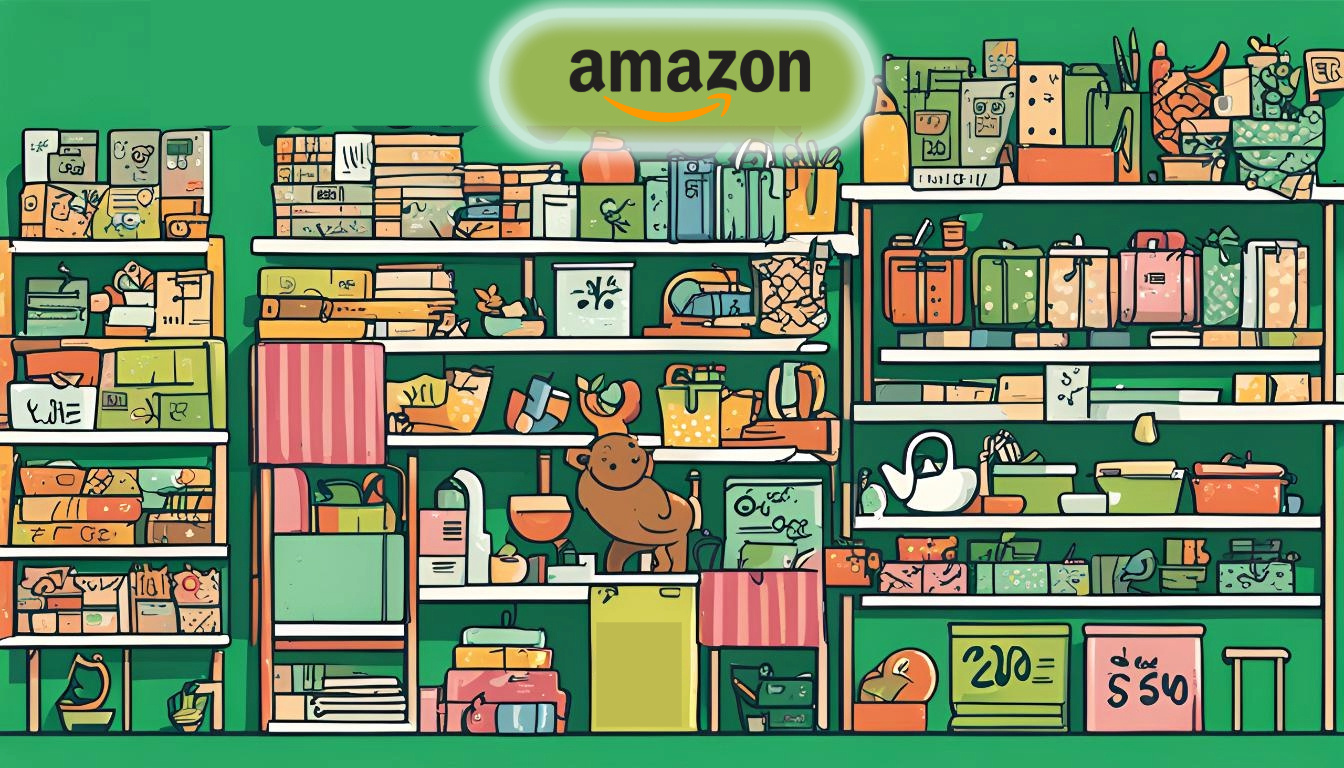Share this
How to Sell Paperback Books Online In 2025
by Shipfusion Team on Nov. 18, 2024

If you’ve ever wanted to sell paperback books online, now is a great time to do so. Sales numbers prove consumers continue to crave the tactile satisfaction of turning the page of a physical novel. Independent sellers and small businesses are capitalizing upon this interest by offering new releases, niche genres, and rare finds alike on a range of ecommerce platforms. In this article, we run through the basics of selling paperback books online and offer some tips for success to use in 2025 and beyond.
Step 1: Choose Your Sales Platform
Choosing the right platform is fundamental to your success. Each sales channel offers distinct advantages that align with different seller needs.
Amazon
Amazon remains the most powerful platform for online book sales, providing unparalleled visibility and access to millions of buyers. Key features of Amazon include its user-friendly listing process and fulfillment services such as Fulfillment by Amazon (FBA). By opting for FBA, sellers can offload logistics like storage, packing, and shipping, allowing them to focus on growing their business.
Advantages: High traffic, credibility, and access to Amazon’s global customer base.
Challenges: High competition and fees that may cut into profit margins.
eBay
For sellers focusing on niche or collectible books, eBay presents a unique opportunity. eBay’s auction format can drive up prices for rare and sought-after titles, making it ideal for specialty inventory. The platform’s global reach and customizable listings also allow sellers to provide detailed descriptions and high-quality images.
Advantages: Flexibility in pricing, strong global reach, ideal for unique items.
Challenges: More manual work for inventory management and shipping.
Shopify
Shopify is a versatile ecommerce platform that empowers sellers to create their own online store with full control over branding and customer experience. This platform offers a range of customizable templates, seamless payment processing, and integrations with various apps to enhance functionality. Shopify also supports SEO tools that help your store rank higher in search engines.
Advantages: Full control over store branding, robust eCommerce tools, and scalability.
Challenges: Monthly fees and the need for more hands-on management compared to marketplace platforms.
WooCommerce
WooCommerce is a powerful option for sellers who already have a WordPress website or plan to build one. This plugin transforms a WordPress site into a fully functional eCommerce store with advanced customization options. WooCommerce supports various payment gateways and extensions that can enhance your store’s features.
Advantages: Highly customizable, low cost to start, and excellent for sellers familiar with WordPress.
Challenges: Requires more technical knowledge and ongoing maintenance.
TikTok Shop
TikTok Shop is a newer addition that leverages the power of social commerce. This platform integrates seamlessly with TikTok’s engaging video content, allowing sellers to showcase books through creative videos and live streams. Users can purchase directly within the app, creating a smooth buying experience.
Advantages: Direct engagement with a younger audience, potential for viral exposure, and innovative promotion formats.
Challenges: Best suited for sellers comfortable with video content creation and regular interaction with followers.
YouTube Shopping
YouTube Shopping is an excellent platform for sellers who are adept at creating video content. This platform enables sellers to showcase books through detailed reviews, unboxing videos, or book-related discussions. With clickable links embedded in videos, viewers can make purchases directly from the content.
Advantages: High engagement rates, ideal for sellers with an existing YouTube presence, and integration with broader video marketing strategies.
Challenges: Requires consistent content creation and an engaged subscriber base to be effective.
Facebook Shop
Selling on Facebook Shop offers an accessible way to reach a broad audience by integrating with your existing Facebook business page. This platform allows sellers to create customizable storefronts and sync their product catalogs across Facebook and Instagram. It’s particularly useful for connecting with established social media audiences.
Advantages: Easy integration with social media, strong community engagement tools, and cross-platform syncing.
Challenges: Limited reach outside of your follower base and potential competition from other sellers within Facebook’s ecosystem.
Other Options
- Etsy: Well-suited for vintage books and handmade book-related items.
- Independent Bookstores: Some local or independent bookstores have online consignment programs that expand your reach without managing your own e-commerce site.
- Social Media: Platforms like Instagram and Facebook Marketplace are excellent for engaging directly with readers and collectors, fostering a community feel.
Step 2: Create High-Quality Product Listings
Your listing is your digital storefront, and it should entice buyers while conveying essential information.
Titles and Descriptions
Craft titles and descriptions that are both informative and optimized for search engines. Use relevant keywords, such as the book’s title, author, genre, and edition. Descriptions should highlight the book's unique selling points, including special features and any accolades it may have received.
Example: “Rare First Edition of [Book Title] by [Author] – Includes Original Illustrations.”
Photos and Condition Descriptions
Photos are crucial to building trust with potential buyers. Take clear, high-resolution images of the book from multiple angles, including any imperfections. Always be transparent about the book's condition, noting wear, marks, or annotations.
Pro Tip: Use natural lighting and a neutral background to make your book stand out.
Step 3: Put Packaging and Shipping First
Shipping plays a significant role in customer satisfaction. Effective packaging ensures that your book reaches buyers in pristine condition.
Choosing the Right Packaging
Invest in sturdy, moisture-resistant materials such as padded mailers or cardboard book mailers. For particularly valuable books, consider adding bubble wrap or a protective sleeve. These details can set you apart as a seller who values quality.
Arranging Cost-Effective Shipping
Balancing cost-effective shipping options with reliability is essential. Partnering with trusted logistics providers like Shipfusion can help streamline your process, from inventory management to final delivery. Utilizing real-time tracking tools and order accuracy checks ensures a positive experience for your customers.
Step 4: Boost Sales with Strong Marketing
With your listings and logistics in place, marketing is the final pillar of successful online book sales. A strong strategy will expand your reach and encourage repeat business.
SEO Optimization
Use product page SEO best practices to rank higher in search results. This includes using relevant keywords naturally and including long-tail phrases that match what potential buyers are searching for, such as “first edition paperback” or “hard-to-find mystery novel.”
Social Media Promotion
Social media platforms – and especially social commerce platforms like Instagram and TikTok – offer creative ways to showcase your paperbacks. Share high-quality photos, behind-the-scenes videos, and engaging content such as “book unboxing” or “reading recommendations” reels. Leveraging trending hashtags can further amplify your reach.
Email Marketing
Build an email list of past customers and book enthusiasts to share new arrivals, exclusive promotions, and personalized recommendations. Including insightful content like “top picks” or “seasonal must-reads” can boost engagement and sales.
Selling Paperback Books Online? Shipfusion Has Solutions for You
Selling paperback books online in 2025 offers a wealth of opportunities for both casual and serious sellers. By carefully selecting your platform, creating compelling listings, prioritizing quality shipping, and deploying effective marketing tactics, you can build a profitable and fulfilling online business.
As you expand your operations, consider working with logistics partners like Shipfusion for end-to-end support that scales with your growth. Start optimizing your book sales strategy today and tap into the thriving world of online book commerce by contacting us for a free quote.
Share this
You May Also Like
These Related Articles

How Does Amazon Fulfillment Work?

How to Sell Toys on Amazon with Success

Amazon FBA vs FBM: Which Is Better for Ecommerce Businesses?
- April 2025 (18)
- March 2025 (26)
- February 2025 (26)
- January 2025 (37)
- December 2024 (16)
- November 2024 (23)
- October 2024 (22)
- September 2024 (27)
- August 2024 (9)
- July 2024 (8)
- June 2024 (5)
- May 2024 (8)
- April 2024 (8)
- March 2024 (6)
- February 2024 (6)
- January 2024 (5)
- December 2023 (3)
- November 2023 (3)
- October 2023 (5)
- September 2023 (4)
- August 2023 (2)
- July 2023 (1)
- June 2023 (4)
- March 2023 (2)
- October 2022 (1)
- September 2022 (5)
- August 2022 (4)
- July 2022 (7)
- June 2022 (4)
- May 2022 (4)
- April 2022 (6)
- March 2022 (2)
- February 2022 (1)
- January 2022 (3)
- December 2021 (2)
- November 2021 (4)
- October 2021 (2)
- September 2021 (5)
- August 2021 (4)
- July 2021 (4)
- June 2021 (3)
- May 2021 (2)
- April 2021 (3)
- March 2021 (3)
- February 2021 (3)
- January 2021 (2)
- December 2020 (4)
- November 2020 (2)
- October 2020 (4)
- September 2020 (2)
- July 2020 (5)
- June 2020 (4)
- May 2020 (2)
- April 2020 (2)
- March 2020 (4)
- February 2020 (1)
- December 2019 (1)
- May 2018 (1)
- March 2018 (2)
- February 2018 (3)
- January 2018 (3)
- November 2017 (3)
- July 2017 (4)
- March 2017 (3)
- February 2017 (5)
- January 2017 (3)
- December 2016 (4)
- November 2016 (6)
- October 2016 (6)
- October 2015 (1)
- September 2015 (1)
- June 2015 (3)
- May 2015 (3)
- August 2014 (1)
- July 2014 (1)
- March 2014 (1)
- February 2014 (1)